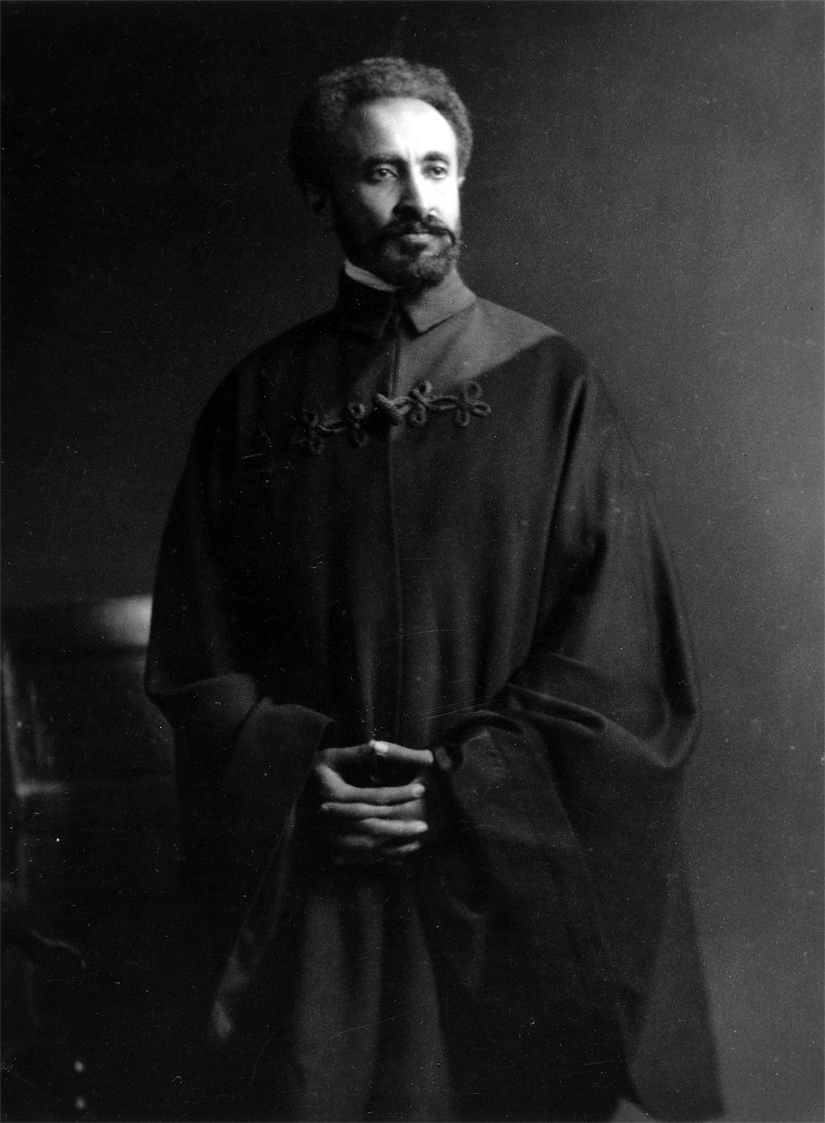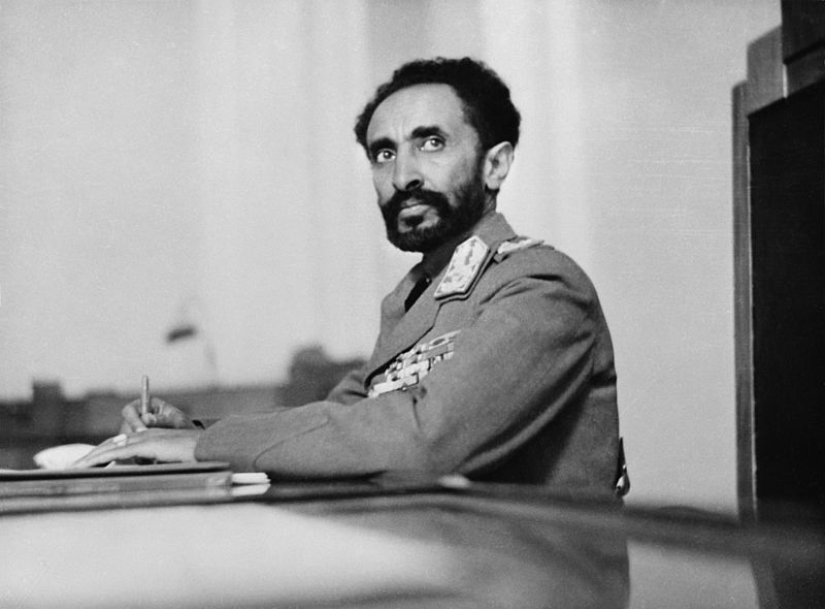Haile Selassie was the last emperor of Ethiopia, a descendant of King Solomon and the Queen of Sheba
By Pictolic https://pictolic.com/article/haile-selassie-was-the-last-emperor-of-ethiopia-a-descendant-of-king-solomon-and-the-queen-of-sheba.htmlHaile Selassie I (his name means power, the strength of the Trinity) was first the regent of the country, and from 1930 - the emperor for 44 years. He is considered a direct descendant of the legendary dynasty of King Solomon and the Queen of Sheba - that is why one of his titles sounds like "The conquering lion of the tribe of Judah, the chosen one of God, the king of kings of Ethiopia."
The figure of Haile Selassie is one of the most significant in Ethiopian and African history.

Teferi Makonnen (the name Haile Selassie I was known by before ascending to the throne) was born the tenth child of the ruling emperor's cousin, and so initially had no chance of ascending to the throne. However, his father was the governor of the Harari province, a military commander and the emperor's chief adviser, so the boy, although the tenth in the family, received a good education.

Already at the age of 13, the future ruler of Ethiopia acquired his first management skills - he was entrusted with a small area 35 kilometers from the city of Harar.
After the death of Emperor Menelik II in 1913, the throne passed to his grandson Lij Iyasu, who became Emperor under the name Iyasu V. At first, relations between him and Teferi were friendly. Even before his accession, Iyasu had married his niece, Menem Asfa, to Teferi. On September 27, 1916, part of the nobility, who were dissatisfied with the Emperor, deposed him and excommunicated him. The daughter of Menelik II was enthroned, and Teferi Makonnen was proclaimed regent and heir to the throne with the title of "ras".
And in 1930, Teferi Makonnen was crowned as the new, 225th Emperor of Ethiopia under the name Haile Selassie I.

When Ethiopia was attacked by Italy, Haile Selassie denounced the Italian use of chemical weapons against his people at a meeting of the League of Nations in 1936. His internationalist views led to Ethiopia becoming a founding member of the United Nations, and his political thought and experience in promoting multilateralism and collective security have proven fruitful and reliable.

However, his methods of suppressing uprisings and rebellions among the Ethiopian nobility, as well as his not always successful attempts to modernize the country, where slavery still existed in the 1930s, left many historians and contemporaries extremely dissatisfied.

In his youth, Haile Selassie met Nikolai Gumilev, who visited Ethiopia. Gumilev came to the future emperor to receive a pass – permission to travel around Abyssinia. Academician Nikolai Ivanovich Vavilov, a decade and a half later, also began his journey around Ethiopia. He was also received by Haile Selassie, no longer a governor and not yet an emperor, but already a regent. He recalled: “Ras Tafari (the future emperor’s name before ascending the throne) asked with great interest about our country. He was especially interested in the revolution and the fate of the imperial court.”

Discontent with the government reached its peak in 1974. The emperor was removed and stripped of power by the military, and a year later Haile Selassie was found dead in his bed. The cause of death is still unknown.

Afterwards, one of the organizers of the revolution, Mengistu Haile Mariam, came to power. He would later become known as one of the most brutal rulers of the 20th century, during whose reign between 200,000 and 3 million people died from hunger, torture and genocide.







Recent articles
Few supermodels can boast such a complex and eventful fate as Veruschka. She was born a countess into one of the most famous German ...

In 1922, the 16-year-old canadian Aloha Vandervell went on an adventurous expedition through the world by car Ford Model‑T became ...

Famous Russian proverb "do Not spit into the well, it is useful to drink water" perfectly describes what you will see on these ...